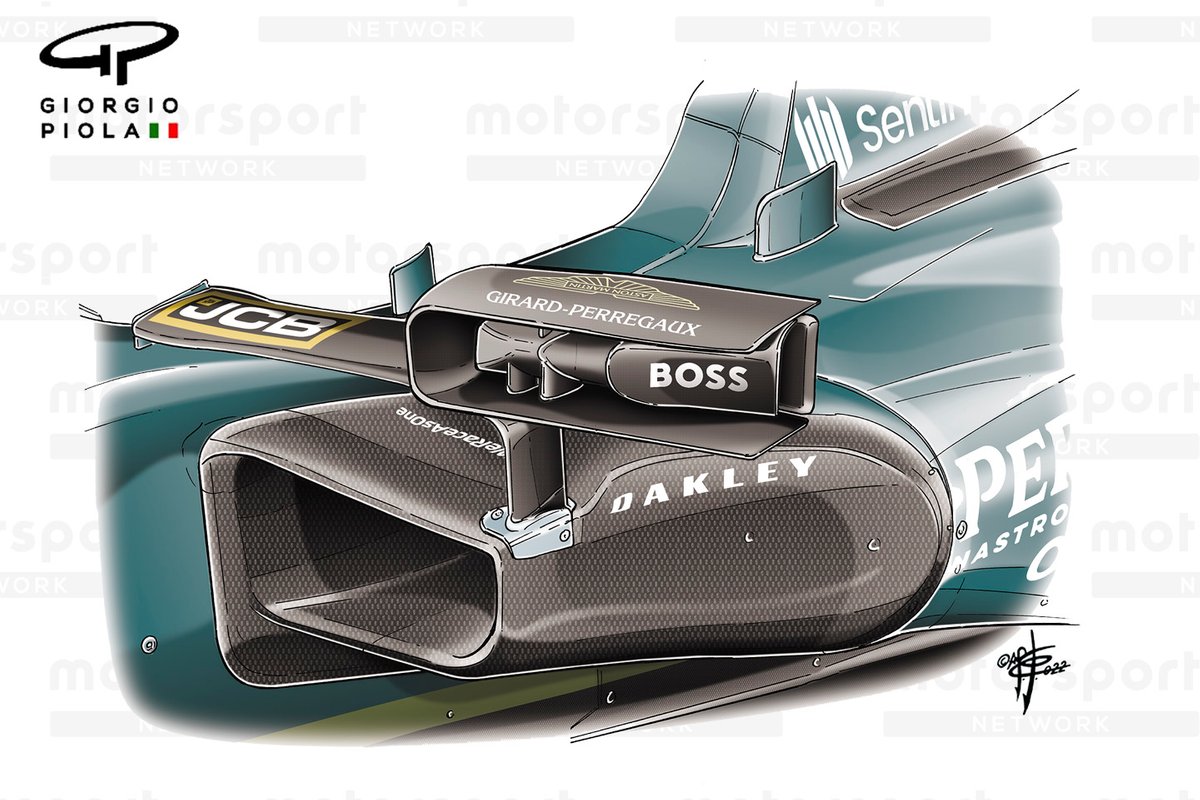
With car designers always keen to make mirrors interfere as little as possible with airflow over the car, the FIA has long had to push hard to enforce their size and position on safety grounds.
But for such a high-tech series like Formula 1, it seems out of place that it is still relying on an old concept of fixed mirrors that have been an ever-present on cars since they first raced.
Indeed, in an era of accurate GPS, on-board cameras and high-speed digital processing, it would seem logical for F1 to make the step and go cutting-edge.
That could mean making it mandatory for F1 cars to be fitted with rearward facing cameras that can display what is going on behind on to a small screen in the cockpit.
The idea of having rear-facing cameras and cockpit screens is nothing new in F1, and there were discussions several years ago between drivers and the FIA about the subject.
Carlos Sainz said back in 2018: “We’ve proposed having cameras, instead of a simple mirror, which is something that they have in other categories, and I think the FIA is going to have a look at it. But it is not something that has been clarified yet.
“It’s come from the drivers, we know other categories drivers have it. I think they have it in the WEC. It doesn’t mean that it’s going to come, but it could be an option.”

In-cockpit digital screens are indeed regularly used in other categories, and made their debut as long ago as 2012 in sportscars when Audi used them on its R18 at Le Mans.
Nowadays they are commonplace in WEC, and are also used in other categories like DTM.
But while the FIA is aware of how well they work elsewhere, there still remains some big hurdles before such in-car screens can make the transition to F1. The FIA’s single-seater technical director Nikolas Tombazis has explained three critical issues that need to be overcome before the screens can be considered for F1.
Asked by Autosport about the technology, he said: “We have given it consideration. It’s got three issues that need to be resolved.
“One is that there’s not much space for a TV screen in the cockpit. Second, it’s used sometimes in closed cockpit cars which have rather dark conditions inside, you can see if you put your phone in sunlight, you don’t want the drivers squinting to see if they can see something. So there’s that.
“Then, the third thing is that there’s a time of adaptation of your focus from one distance to another distance, which we’re also a bit concerned and we need to evaluate carefully.
“At the speeds you are going, you must not lose that half a tenth of a second to adapt, so that’s another issue.
“We are looking at that, and also maybe other ways to do it, such as an audio signal or whatever, but it’s still a work in progress.”

With the prospect of digital screens being used in F1 seeming still far away, for the medium term rearward visibility will remain totally reliant on mirrors.
That is why the FIA is always paying close attention to ensure that car designs don’t hinder what drivers can see behind them - and rule intervention like what is happening for 2023 will be needed.
What is changing with F1’s mirrors for 2023
Matt Somerfield

In order to help drivers see more in their mirrors, the FIA has opted to increase the size of the mirror's surface for 2023.
The reflective surface will increase in width by 50mm, meaning that the mirror body must be wider and the position of the stays might also have to be altered as a consequence.
Teams were given the opportunity to test some solutions during the season in an effort to see what difference it might make to the drivers.
Red Bull was the first to test a larger mirror in Hungary, followed by Mercedes in Belgium and then a group test with all the teams at the Dutch Grand Prix.
An example of the wider mirror can be seen below, as Aston Martin elongated its mirror for the test.
It also saw that as an opportunity to not only extend the surfaces that wrap around the main body but also add an additional vertical fin, adding not only some extra rigidity to the structure but also another flow diverting medium.

Tombazis has explained that the increased dimensions for 2023 are primarily aimed at helping drivers who did not like having curved mirrors inside the housings.
“We went for a mirror that is slightly bigger,” he said. “I believe it went from 150mm to 200mm, and we have seen that has improved the angled view.
“For some drivers, it doesn’t make a difference, because some drivers already have fairly curved mirrors. Some other drivers, they don’t like to have very curved mirrors because it distorts their view too much. So it’s all a bit of a personal thing.
“I think what we’ve changed will improve the visibility of the drivers who couldn’t have very curved mirrors.”







